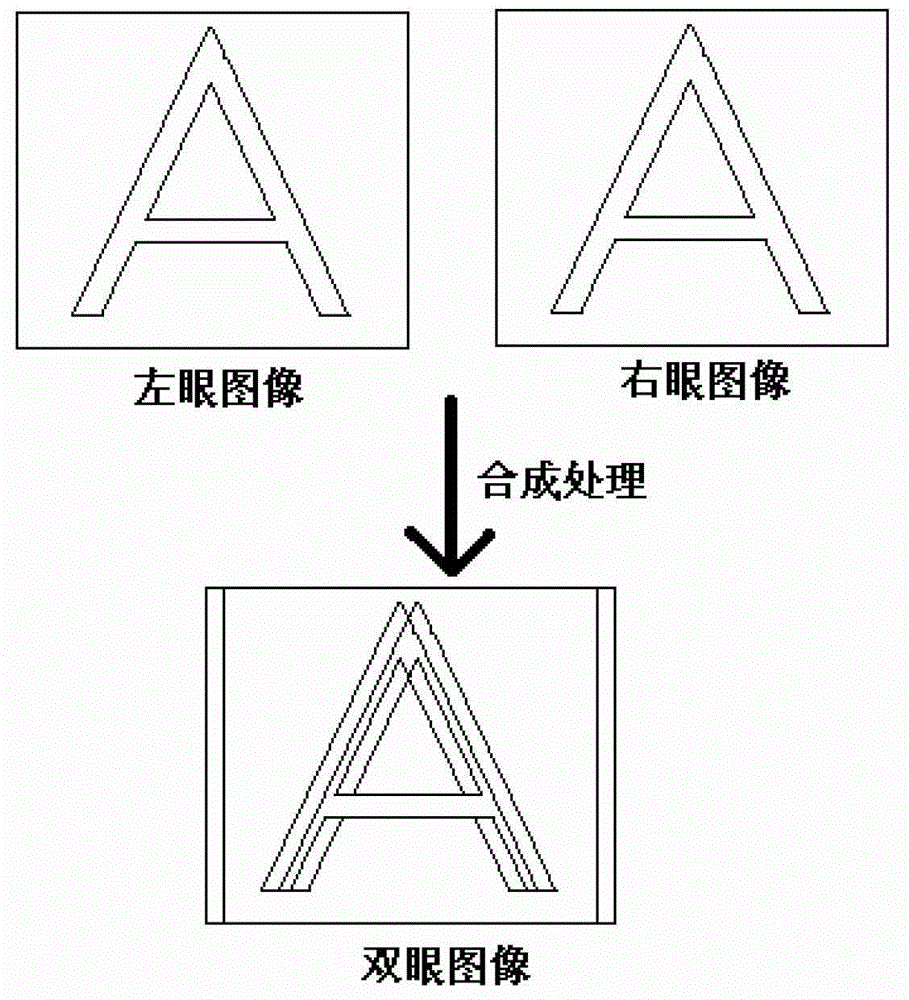Binocular head-wearing display device and method thereof for adjusting image spacing
A display device and image technology, applied in image communication, eye testing equipment, medical science, etc., can solve the problems of troublesome adjustment operation, poor display effect and viewing experience, and achieve simple operation, good display effect and viewing experience , Accurate automatic adjustment effect
- Summary
- Abstract
- Description
- Claims
- Application Information
AI Technical Summary
Problems solved by technology
Method used
Image
Examples
Embodiment 1
[0042] Such as Figure 4 As shown, this embodiment provides a binocular head-mounted display device, which includes:
[0043] Two display units are respectively used to generate images for the left and right eyes of the user, and the images include a test image and a display image; wherein, each of the test images for the left and right eyes of the user has a test mark, and the two test Marks are gradually increased or decreased in spacing.
[0044] The image acquisition unit is configured to acquire images of both eyes of the user.
[0045] The interpupillary distance analysis unit is used to obtain the critical moment when the interpupillary distance of the user's eyes changes according to the images of the user's eyes when the user watches the test image, and determine the distance between the images viewed by the user's left eye and right eye according to the distance between the two test marks at the critical moment ; Among them, when the distance between the two test m...
Embodiment 2
[0048] This embodiment provides a binocular head-mounted display device, such as Figure 5 to Figure 10 As shown, it includes two display units 1, an image acquisition unit, and an interpupillary distance analysis unit.
[0049] Wherein, the two display units 1 are respectively used to generate images viewed by the user's left eye 8 and right eye 8, which can be conventional display devices such as liquid crystal display unit 1 (LCD) and organic electroluminescent display unit 1 (OLED). . Of course, in order to adapt to the head-mounted display device, the volume of the display unit 1 should be small and should have a relatively high resolution.
[0050] preferred, such as Figure 5 , Figure 8 As shown, the display unit 1 is arranged on the side of the binocular head-mounted display device (such as in the "spectacles"), so its display surface does not face the user's eyes 8, and the images it generates do not directly reach the user's eyes 8. At this time, the binocular h...
Embodiment 3
[0076] This embodiment provides a method for adjusting the image distance of a binocular head-mounted display device, including:
[0077] The two display units generate test images for the user's left eye and right eye respectively, and there is a test mark in each test image, and the distance between the two test marks increases or decreases gradually; image;
[0078] The interpupillary distance analysis unit obtains the critical moment when the interpupillary distance of the user's eyes changes according to the images of the user's eyes, and determines the distance between the images viewed by the user's left eye and right eye according to the distance between the two test marks at the critical moment; wherein, when the distance between the two test marks gradually When it increases, the interpupillary distance of the user's eyes gradually increases before the critical moment and remains stable from the critical moment. When the distance between the two test marks gradually ...
PUM
 Login to View More
Login to View More Abstract
Description
Claims
Application Information
 Login to View More
Login to View More - R&D
- Intellectual Property
- Life Sciences
- Materials
- Tech Scout
- Unparalleled Data Quality
- Higher Quality Content
- 60% Fewer Hallucinations
Browse by: Latest US Patents, China's latest patents, Technical Efficacy Thesaurus, Application Domain, Technology Topic, Popular Technical Reports.
© 2025 PatSnap. All rights reserved.Legal|Privacy policy|Modern Slavery Act Transparency Statement|Sitemap|About US| Contact US: help@patsnap.com



